National
The elements of Marc Garneau – A special report from Paul Wells
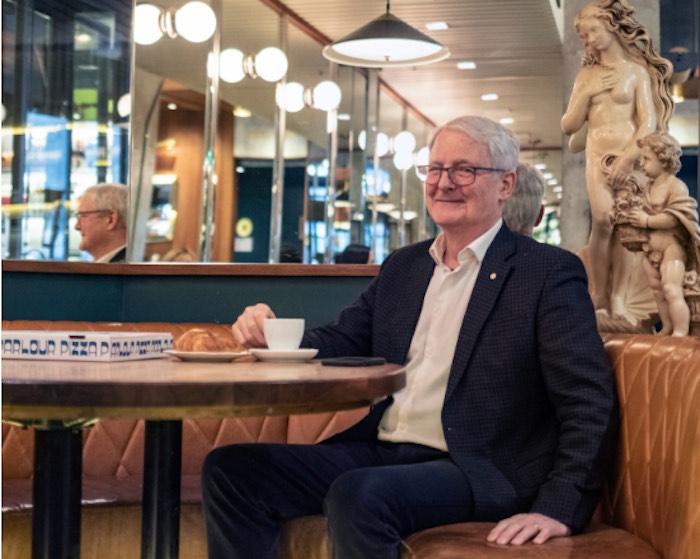
|
|
He was trained to admit every error. Then he went into politics. A feature interview with the retiring MP for Notre-Dame-de-Grâce—Westmount
Introduction
When you resign your seat in the House of Commons, you get to keep your phone for 90 days. The deadlines for cleaning out your offices on Parliament Hill and in your riding are tighter but still civilized. Soon Marc Garneau will leave his constituency office on the third floor of a nondescript office building in Westmount, the affluent anglophone enclave west of downtown Montreal, for the last time. But there’s no rush, so he met me there on Monday.
Trying to get politicians to speak frankly while they’re still in office is not always rewarding, It gets easier quickly once they leave. So I thought a visit with Garneau was worth the drive to Montreal, even though he’s been cagey in his remarks to journalists since he announced his retirement on March 8. I’ll cut to the chase: His interview with me wasn’t the work of a rebel either. Garneau remains a gentleman and a Liberal. He offered only praise for Justin Trudeau. But on several issues — communications philosophy; the handling of the Freedom Convoy occupation of Ottawa; and the proper attitude toward one’s own fallibility — he drew occasional sharp distinctions between his attitude and the Trudeau government’s.
I took the scenic route to get to that stuff. Garneau was the first Canadian to fly in space. He was a national celebrity before Trudeau finished high school. And while that’s a historic distinction, Garneau shares with many more parliamentarians a long career outside politics that preceded, and informed, his career in elected office. Not all of that is the stuff of every conversation, but this one was valedictory in tone. I thought it best to start at the beginning.
This is an unusually long post on the Paul Wells newsletter. I figured I owed everyone a good feature read. I’m leaving the paywall off. You can help spread word about the writing I do by sharing this with a friend or with your networks.
I also want to remind readers that writing this newsletter is what I do for a living. When you decide to become a paid subscriber, you help support this work. You also make it possible for me to do things too few of my colleagues elsewhere are able to do — things like travelling, or paying a professional photographer properly to illustrate my work.
1. Water
I began by asking him about the year and a half he spent as a combat systems engineer on the HMCS Algonquin. When he arrived on board, it was the newest destroyer in the Canadian Navy.
“It was what I had dreamt of from the beginning of my life,” he said. “My first love was the Navy.” His father’s family was francophone Quebecers, soldiers from way back. His father fought in the infantry in WWII and was posted in Germany for two years as the Cold War settled in. “I crossed the ocean with my parents in 1956 coming back from Germany,” he said. “We came back on a ship that was on its last voyage, the Samaria, and I just fell in love with the ocean. A few years later, we went back to England on the Empress of Britain. Those confirmed for me that I wanted to be in the Navy.”
The Algonquin, a big boat with 280 crew, spent three months doing exercises as part of STANAVFORLANT, NATO’s multinational Standing Naval Force Atlantic, which would pretend the Soviet Union was up to various kinds of risky business and figure out ways to respond. Off Puerto Rico he led tests of the new Sea Sparrow missile system. Around Newfoundland’s outports, the Algonquin took the province’s lieutenant governor on an annual tour.
Young Garneau wasn’t particularly interested in moving up the ranks. “I’m an engineer. I didn’t want to be the ship captain. I wanted to be the engineer that kept the equipment going. That may not sound very exciting. But for me that was exciting, because it’s quite a job to keep all that equipment operational in case you had to go into conflict.”
2. Air
Advancement for its own sake held no appeal. But when he saw a nondescript ad from the National Research Council calling for applicants for Canada’s first astronaut corps, that sounded better than a promotion. “Wow. The idea of possibly going into space just blew me away. At the same time, I thought my chances [of being chosen] were pretty close to zero.”
In May of 1983 there were 4,200 applicants. Six months later, six remained. It became clear pretty soon the program wasn’t just looking for technical expertise but for — well, for heroes. Or at least for people who wouldn’t screw up the illusion.
“They wanted us to write essays about why we thought that we were particularly well suited. Did we realize that we would become public figures? And were we ready for that? And did we think it was important for Canada? Medical [exams] like you’d never had before. Every single thing checked, because you had to be 100% fit. Then they brought us in for the last week and and they subjected us to a whole bunch of things.
“We had to give presentations in front of the selection board. Any attempted humour was met with a stone-cold face. I remember coming out of it thinking, ‘I’ve totally bombed this.’ But they’d all been trained not to react to anything.
“Do you remember somebody called Keith Morrison?” I sure do. TV reporter and anchor, CTV to the CBC to NBC. He actually interviewed me once, when that was an odd thing to do, and I remember he was good at it. “Well, Keith was hired for the week. And he put us through our paces, sort of doing the interview thing. So that was another thing they wanted to know, if you’d be able to do that. They had us in social settings, like a cocktail kind of thing. [They wanted to see] whether you were relatively comfortable in the company of total strangers, that kind of thing. So it’s a pretty thorough week. And by the end of that, they said, ‘Look, stand by your telephone between five and seven on the third of December and you’ll get a call.’ We’re 20 at that point. ‘It’ll either be to say, sorry you didn’t make it, or, you made it.’ And I was fortunate to be one of the six chosen. They called about six o’clock. They didn’t beat around the bush. ‘Look, you made it. Congratulations. Keep it private and we’ll trot you out on the following Monday.’ Which they did.”
When you know what happened next in Garneau’s career, all this prodding and profiling and media scrutiny takes on a different meaning. He started to meet prime ministers.
Pierre Trudeau: “Man of powerful intellect. Everyone knows that. There are warmer people than Pierre Trudeau. But very cordial.”
Brian Mulroney: “Mulroney had just been elected. He wanted to meet Ronald Reagan right away… I was summoned, along with two of my crew members, Bob Crippen and Kathryn Sullivan. Which, by the way, is a total no-no. You do not take the next crew that’s going to fly in three weeks out of their bubble of training and getting ready. Except if it’s POTUS. Reagan thought it was good idea, so we were summoned. I spent time in the Oval Office with with Reagan, whom I liked right away, and Mulroney, whom I also liked right away…. I was even at the Shamrock Summit a couple of months later in Quebec City. I wasn’t quite so happy with what PMO told me to do, which is to come up through the floor on a thing that was raising me up with smoke and lighting on me, dressed in my flight suit, and having to say, ‘Take me to your leader,’ which the crowd liked. And I thought, ‘I’m making a fool of myself here.’”
On the first trip, Garneau was a payload specialist, which meant he had responsibility for a suite of Canadian scientific experiments and little else. But he had two audiences he wanted to please. NASA was the first. “I had to make a good impression so that, based on a sample of one, they’d say, ‘Okay, he did pretty well. Let’s keep inviting Canadians to fly.’ And quite a few Canadians have flown.”
Canadians were the second audience. “I wanted Canadians to be proud of me.”
Both audiences gave him the thumbs up. Today there’s a high school in Toronto named after him. In 1992 Garneau and Chris Hadfield reported for training to become mission specialists, with much broader responsibility for mission success. It took another year of training before Garneau was eligible for his second flight, in 1996. His third and final mission was at the end of 2000. There were Russians waiting at the International Space Station when the shuttle Endeavour delivered Garneau and the others. Relations with Russia were as warm as they’ve ever been. “It was more than cordial. Frankly our lives depended on one another.”
It was a longer acquaintance with higher stakes than most of us ever experience. “One of the things I loved the most about NASA was that if you fuck up” — he paused before using the salty word — “you confess. That is the culture there.”
Probably this does not need to be spelled out, but here goes anyway. This culture of honesty was not a simple preference. Shuttle crews rode a lake of liquid fuel and twin towers of solid fuel at speeds their own ancestors could not have imagined. If a bug slipped into the system it could kill them and set spaceflight back decades, as indeed it did, twice. Owning up to error was the primary method of keeping colleagues, and the dream of spaceflight, alive.
“I did hundreds of simulations. I was the first non-American CAPCOM ever. CAPCOM’s the guy who talks to the crew in orbit for Mission Control. And we did hundreds of simulations. I covered 17 missions, just as CAPCOM. And after every simulation, where the crew, perhaps, had not picked up the problem and had not reacted properly to it, we’d do a post mortem.
“And that culture of honesty and openness, which you absolutely need in the space business — you can’t have people making excuses or trying to hide things — that’s what I love the most. And I wish it existed in all facets of life, including the one I ended up in.”
3. Earth
Garneau first ran for Parliament in 2006, just west of Montreal Island, and lost, in the first of three elections when losing was most of what Liberals did. He was interested in Outremont in a 2007 by-election. So was Justin Trudeau. Stéphane Dion was the leader, though, and he thought a political scientist was just the ticket. Dion’s designated nominee, Jocelyn Coulon, did not fare well.
In 2008 Garneau inherited the Liberal nomination, essentially a Wonka golden ticket, in Westmount, as solid a Liberal fortress as any in Canada. Only a catastrophe could lose Westmount for the Liberal. In 2011 it almost happened — Garneau beat the New Democrat by only 642 votes in the party’s worst national defeat in since Confederation. Soon Peter C. Newman had a book out proclaiming the Liberals were history.
“There’s something intimate about being only 33 [MPs in the Liberal caucus], Garneau recalled. “We got to know each other in a kind of a relationship that you don’t get when you’re 150 or 160. So I really enjoyed the collegiality of having that small, small group. Although of course I was hoping it wouldn’t last too long.”
In 2013, Garneau, who hadn’t been interested in commanding a ship, decided to try his chances with a political party. He ran for the Liberal leadership. He had competition.
“I personally believe that I had good policy that I put in the shop window. What I didn’t have — what I still don’t have — is charisma. I’m not interested in charisma, by the way. I’ve lived my life very well without charisma. And I’m not saying the electorate chooses on a superficial basis. But there was something about Justin Trudeau that was incredibly appealing to people.”
Garneau bowed to the inevitable and dropped out of the race. Eighteen months later he was co-chair of the Liberal Party’s “International Affairs Council of Advisors,” with a threefold mission: Figure out the party’s foreign policy; teach foreign policy to a leader with extremely limited experience in the field; and be seen showing interest in foreign policy. The group met regularly. “Trudeau only came occasionally to meet everybody and to sort of stir stir things up and have a really good discussion,” Garneau said.
4. Fire
As co-chair (with Andrew Leslie) of Trudeau’s Council of Advisors, Garneau figured he had a good chance to become foreign minister. He got Transport.
“You know, I’ve lived 17 years of my life abroad. And I love foreign policy. I wasn’t expecting Transport. And it turned out to be a job I loved. Although at first I thought, ‘Why’d he put me in transport?’
“When I got the call that, you know, ‘The Prime Minister wants to meet you,’ I thought — This is after the vetting process, ‘Are there any skeletons in your closet?’ — I thought, ‘What’s he going to put me in?’ I thought, Defence because of my background. I was in the regular forces. Or I thought, then, maybe Industry, because I was the president of the Canadian Space Agency and I worked for the Minister of Industry, Science and Technology at the time. And maybe even Foreign Affairs, because he’d had me in this job for the past two years. I wasn’t expecting Transport.” Garneau chuckled at the incongruity of it. “But now, after a little while, I saw the logic of it. I was in the Navy, ships, so I know the marine environment. I know the air environment. And so there is a certain logic to it. And it’s a job that I came to love.” He held the post for five and a half years. Only David Collenette and Lionel Chevrier lasted longer.
The new governing caucus had five times as many MPs as the Liberal caucus it replaced. “It was a heady experience,” Garneau said. “And there was a certain amount of chaos, which is understandable because it takes a couple of years to learn the basics of your job.”
It must have been a management challenge for the Prime Minister’s Office, I ventured. To have a finance minister, health minister, justice minister, defence minister who’d never been Members of Parliament before, let alone cabinet ministers. How did the PMO handle that? “It was a little bit like when you see kindergarten children all tied up with ropes, going down the street.”
Did the control ever chafe? “I had some times where I felt one way and and I felt that the centre did not necessarily agree with it. Yeah. That comes from the dynamic. If you’ve got your mandate letter, and you interpret that mandate letter the way you feel it must be implemented — you know, the vast majority of the time, no problem. But there was the odd occasion. You’ll forgive me if I don’t go into details on it. But I was very conscious of the fact [that] you have a chief of staff, your chief of staff is a key person for you. But that chief of staff reports to you, but also must report to the chief of staff of the Prime Minister. I made an indirect reference to it in my parting speech, that I sometimes made their life difficult because I might have wanted to go one way whilst the center didn’t necessarily want to go that way.”
We had been talking for more than an hour. I asked Garneau about the Freedom Convoy of January and February 2022, which has been on my mind. Specifically, I asked Garneau about his Liberal caucus colleague Joël Lightbound, who held an astonishing news conference in the second week of the Ottawa siege to say the Liberals’ COVID policy “stigmatizes and divides people.”
“I definitely took very much note of it,” he said of Lightbound’s surgical sortie. “Some of what he said is true. There were people on the Hill that were not extremists. They were just there because they felt that their rights were being not respected.” He faced his share of verbal abuse as he made his way to and from the Hill, but even still —
He paused. “I’ll be very candid. I don’t think we handled it as well as we could have.”
In what sense? “I think there was a sense that, ‘We’re not going to talk to you people. You’re just a bunch of troublemakers.’ I had always been brought up to not avoid dealing with difficult issues. This was an incredibly difficult issue.” Another pause. “So that’s just my personal comment.”
The other thing I wanted to ask him about was the tremendous controversy he and two other back-bench Liberals have stirred up over the interaction between Quebec’s newly beefed-up language law and Bill C-13, which proposes amendments to the federal Official Languages Act. This has put Garneau and his colleagues squarely on the side of Montreal’s anglophone population against a majority of Quebec’s elected politicians. And it’s brought Garneau in for some unaccustomed criticism. Barely two weeks before he resigned, he was complaining about the rough ride from Quebec commentators on Twitter.

12:40 PM ∙ Feb 18, 2023
Garneau’s comments on this were long, and would constitute inside baseball for most readers outside Quebec, but he didn’t like seeing Quebec’s language laws incorporated by reference into a federal bill. “I have very rarely disagreed with my party, but I disagreed with them on that.” It got worse for Garneau when he read 88 amendments introduced by the Bloc Québécois, five of which said that in case of a conflict between federal and provincial legislation, Quebec’s should predominate. Those amendments were eventually rejected, but by then Garneau was already on the record with his concerns. “I’m always ready to face criticism, but it got personal. And I think that’s sad.”
The controversy has been a much bigger deal inside Quebec than outside, but Garneau insisted it’s not why he’s leaving politics.
The reason I’m leaving is because I made that promise to my wife, and to my family. I actually told him after the 2019 election that that was my last election. I had been reappointed to Transport. And I thought, ‘Okay, this is a lovely way to finish.’
“Then in January of 2021, to my great surprise, the Prime Minister [shuffled Garneau.] I think it was motivated by the fact that Navdeep Bains pulled out. The Prime Minister, I personally think that he said, ‘Okay, I want François-Philippe to take over from that. And there’s a bit of musical chairs and I ended up in foreign affairs.
“But seven months later, an election was announced. And I felt, in all good conscience, that after seven months in that portfolio — to now say, ‘Sorry, I’m leaving,’ when I had been the fourth appointed in under six years, it just wouldn’t have been right.
“Now, if the prime minister had told me, ‘Mark, after this election, you won’t be in the cabinet,’ I wouldn’t have run. But he didn’t tell me that.
“I ran hoping to go back into that job. Because Lord knows there were things that I wanted to do. With respect to Afghanistan, China, the Indo-Pacific strategy, I’d been working all that stuff. But the bottom line was that he said, ‘You’re not in cabinet anymore.’
“And so, at this point, I felt it would be really not acceptable for me to say, ‘Okay, thank you for electing me three weeks ago, I’m leaving.’ So I felt I needed to put in some time. To my great personal satisfaction, I was given two things that I really enjoyed. One was to be chair of the Indigenous and Northern Affairs Committee, which I think has an important role with respect to reconciliation. And the other one was kind of unexpected… medical assistance in dying, where I was co-chair with a senator on this special mixed committee.”
That committee presented its final report in February. Garneau resigned three weeks later. He was already in the history books before he ever ran for office. Would he run now, in the atmosphere of today’s politics, if he were just starting out? Is there still room in politics for an engineer who just wants to make things work better? These are eternal questions, and I had already asked Garneau enough questions for one day.
For the full subscriber experience, upgrade your subscription.
Business
103 Conflicts and Counting Unprecedented Ethics Web of Prime Minister Mark Carney
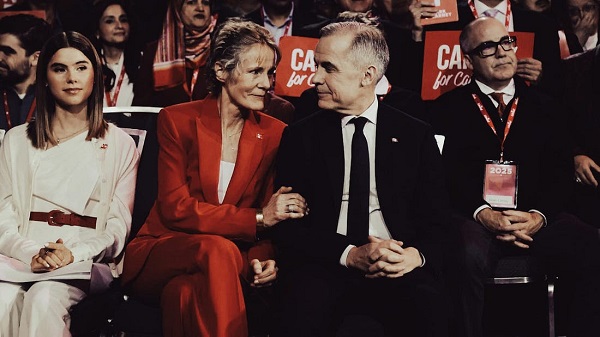

 Dan Knight
Dan Knight
Brookfield. The PMO. Eurasia Group. One Green Agenda, Billions in Conflicts.
Well, it finally happened. After months of dodging questions and hiding behind vague platitudes about “climate leadership,” Prime Minister Mark Carney’s official conflict-of-interest screen has been released by the Ethics Commissioner—and what it reveals is nothing short of staggering. Not five entities. Not a dozen. One hundred and three. That’s how many corporate and financial interests Carney has quietly acknowledged are too conflicted for him to touch.
At the center of this web? Brookfield Asset Management, the $1 trillion global investment firm where Carney was Vice-Chair before walking straight into Canada’s top political office. The very same Brookfield that owns energy projects, pipelines, nuclear companies, real estate empires, carbon offset schemes you name it, they’ve got a piece of it. And now, they’ve got a former executive running the country.
We’re told it’s all perfectly legal. We’re told Carney has “recused himself.” But what this disclosure actually shows is something much bigger: a government captured by finance, a prime minister with deep, ongoing entanglements in the very sectors his policies now enrich, and a climate agenda that’s beginning to look a whole lot like a money-printing operation for the global elite.
The deeper one digs into Prime Minister Mark Carney’s ethics disclosure, the clearer the picture becomes: what’s been framed as a climate leadership story is, in reality, a tightly wound web of commercial interest wrapped in green rhetoric. The 103-entity conflict-of-interest screen, ostensibly a shield against impropriety, instead serves as a road map of how thoroughly Canada’s top political office is entangled in the global green finance complex centered around Brookfield Asset Management.
As of Q1 2025, Brookfield reports $125 billion in assets under management (AUM) in its Renewable Power & Transition segment, a figure representing 12.5% of its overall $1 trillion portfolio. This segment alone encompasses most of the entities on Carney’s ethics screen: nearly 60 out of 103, even after accounting for duplicates. These aren’t passive holdings they’re the very projects, technologies, and subsidy-eligible vehicles Carney once oversaw directly as vice-chair of Brookfield and as co-lead of its $15 billion Global Transition Fund.
Brookfield’s renewables portfolio is vast: over 41.8 GW in installed capacity globally across wind, solar, hydro, and storage, with a 200+ GW development pipeline. A significant portion of this is owned or operated through the same SPVs and subsidiaries now appearing on the conflict list. Notable entries include Scout Clean Energy ($1B), Urban Grid ($650M), and Standard Solar ($540M). These acquisitions were all completed while Carney was at Brookfield, and they continue to generate revenue from U.S. and Canadian subsidy frameworks programs now shaped by the very government he leads.
Brookfield Renewable Partners L.P., the sector flagship, holds approximately $95 billion in total assets and generated $315 million in funds from operations in Q1 2025 alone. The firm is planning to add another 8 GW in capacity this year expansion that is, in part, subsidized through the same green transition policies Carney has promoted both in office and as a climate finance advocate.
The line between public and private interest blurs even further when examining the entities categorized under the “energy transition” banner; nuclear, CCS (carbon capture and storage), and so-called e-fuels. Carney’s screen includes Brookfield’s recent $8 billion acquisition of Westinghouse Electric Company, a nuclear power behemoth now positioned to benefit from Canada’s federal nuclear incentives and SMR (small modular reactor) program. Other flagged investments like Entropy and Carbon TerraVault fall directly into carbon credit and offset schemes—markets heavily influenced by federal regulation and incentive design.
Let’s stop pretending. What we’re witnessing here isn’t just conflict of interest, it’s a complete merger of state power and corporate ambition, all dressed up in the language of moral urgency. The Ethics Commissioner’s so-called “screen” for Mark Carney? It’s a joke. A checklist. A bureaucratic fig leaf meant to reassure you that everything’s above board. But it’s not.
Because here’s the truth: Carney is policing himself. He’s supposed to recuse himself from decisions that benefit the 103 entities he’s tied to many of which he helped create or oversee as Vice-Chair of Brookfield Asset Management. But who decides if he’s in conflict? He does. Or more accurately, the PMO does. The same PMO now drafting Dominion Barton-style focus groups to figure out how best to sell you the green grift. There’s no third-party oversight, no transparency on what’s actually in his so-called blind trust, and no disclosure of the carried interest he may still be entitled to from Brookfield’s billions in funds.
Meanwhile, the policy levers of government are being pulled in exactly the direction Brookfield bet on. Wind, solar, carbon capture, nuclear, every so-called “transition” sector that Brookfield spent years buying into is now flush with green subsidies, ESG guarantees, and taxpayer-backed investment shields. This isn’t the free market at work, it’s a strategic payoff, engineered by someone who’s now running one of the most powerful G7 economies.
And again, none of it is illegal. That’s the most damning part. Because legality isn’t the standard here. The standard is integrity, and that’s nowhere to be found. The scale of this overlap isn’t just large. It’s systemic. It’s built into the very foundation of the Carney government’s climate policy. The same man who structured these funds is now the man signing off on the policies that make them profitable.
Diana Fox Carney’s Quiet Role in the Climate Cash Machine
And just when you thought the web of influence stopped at the Prime Minister himself, along comes Diana Fox Carney, economist, climate consultant, and spouse of the most well-connected man in Canadian politics. While Mark Carney’s direct financial entanglements with Brookfield Asset Management are now public record, his wife’s career trajectory paints an equally troubling picture of how the same elite networks driving Canada’s green spending are profiting in parallel, behind the curtain.
Diana Fox Carney currently holds a senior advisory role at Eurasia Group, the New York-based geopolitical risk consultancy that’s become a quiet powerhouse in shaping global ESG narratives. It’s also the same firm where Gerald Butts—Trudeau’s longtime fixer and architect of the federal climate playbook—now serves as vice chair. Add in former journalist Evan Solomon and even Conservative stalwart John Baird, and you’ve got a bipartisan consultancy stacked with Canadian political operators. Convenient? Maybe. Coordinated? You decide.
And what has this firm staffed with Liberal-era insiders received in return? Millions in untendered government contracts, including a $446,210 deal from Natural Resources Canada in 2024 for vaguely defined “geopolitical research.” That’s nearly half a million dollars in taxpayer money handed out without competition, to a firm employing the sitting Prime Minister’s wife—and his former colleagues. Just coincidence, right?
But Eurasia Group is only the start. Diana’s reach extends far beyond advisory calls. She’s connected to:
- BeyondNetZero, a climate equity fund backed by U.S. private capital giant General Atlantic.
- Helios CLEAR, investing in African climate “resilience.”
- ClientEarth U.S. and the Shell Foundation, both pushing aggressive environmental litigation and policy influence.
- Canada 2020, a Trudeau-aligned think tank that’s pocketed over $1 million in federal grants.
Throw in indirect ties to Gates Foundation funding, Save the Children, and research networks influencing African agriculture, and you’re looking at a network of transnational climate consultants with deep, ongoing influence over the exact climate policies the federal government is now implementing under her husband’s leadership.
Now, legally, Diana is in the clear. She’s not a public office holder. But that’s the point. The rules weren’t designed for this new class of political operator—the dual-career globalist power couple, where one side signs the climate cheques while the other cashes them. No formal disclosure is required. No recusals. No transparency. Yet the influence is there. The access is there. The money is flowing.
Opposition Reaction: Pierre Poilievre Slams Carney’s Hidden Conflicts, Demands Real Transparency
Conservative Leader Pierre Poilievre wasted no time responding to the bombshell ethics screen showing Prime Minister Mark Carney is recusing himself from dealings with over 100 companies, many tied to his former employer, Brookfield Asset Management. In a pair of direct and widely shared posts, Poilievre accused Carney of concealing critical financial entanglements from voters during the 2025 election, and warned that the Liberal leader is now either positioned to profit from federal decisions or paralyzed from making them.
“Mark Carney must explain why he kept these conflicts secret from voters until after the election,” Poilievre wrote. “Now he will be in a position to profit from big decisions or will be forced to sit out those decisions altogether. Either way, Canadians will pay the price.”
In a second post earlier that morning, Poilievre challenged the credibility of Carney’s so-called blind trust, urging the Prime Minister to liquidate his holdings entirely and hand the cash to a trustee who can invest it without Carney’s knowledge or influence:
“Otherwise, he will always know how political decisions can affect his personal wealth.”
These statements mark the strongest opposition rebuke yet of the Carney government’s financial entanglements. Poilievre’s message echoes growing public criticism that the ethics screen is little more than window dressing, lacking third-party oversight, and that it fails to address indirect benefit through carried interest, deferred compensation, or spousal affiliations.
While Carney has claimed he is in full compliance with federal ethics laws, the fact that the disclosures were released only after the election is fueling outrage—not just among Conservatives but from broader accountability watchdogs. With over 100 entities flagged, many of them tied to green energy, infrastructure, and climate finance—the same sectors receiving billions in federal spending—the Conservative leader has positioned himself as the voice of those demanding a full forensic audit of the Prime Minister’s interests.
The message from the opposition is clear: if this were a Conservative leader, the media would be calling it a scandal. But because it’s Carney—the global banker, the climate envoy, the Liberal savior—the establishment is looking the other way. Poilievre’s Conservatives aren’t. And they’re turning this into a defining issue of integrity and accountability in Canadian politics.
Let’s Call This What It Is
This isn’t subtle. This isn’t nuanced. This is what a grift looks like—on paper, in public, in black and white. Over one hundred conflicts of interest tied directly to Mark Carney. Entire portfolios of foreign and domestic holdings, billions in green investments, shell companies in Bermuda—and that’s before we even get to his wife’s global consultancy work, advising firms that quietly gobble up federal contracts without a single public tender.
And here’s the thing: we weren’t told any of this during the election. There was no press conference, no headline, no public vetting of the sprawling web of corporate and climate interests now tied to the highest office in the country. Why? Because it would have compromised the Liberal grip on power. Because the last thing this party wanted Canadians to know was that their new leader wasn’t just a banker—but a banker with a boardroom’s worth of financial strings still attached.
Now imagine—just for a moment—if it had been Pierre Poilievre. Or Andrew Scheer. Or any Conservative leader with over a hundred screened entities, global finance ties, offshore SPVs, and a spouse employed by a company collecting millions in government money. The press would be in a frenzy. The CBC would be running specials. They’d be calling him compromised, unfit, a foreign agent.
But because it’s their guy—because it’s the Liberal elite’s banker-in-chief—we’re told it’s fine. It’s all above board. Move along, nothing to see here.
Nonsense. Absolute nonsense.
This is not leadership. This is ideological grifting at the highest level. The Liberal Party, once the party of national unity and democratic accountability, has become a hollowed-out machine for elite interests. They’re not liberals. They’re grifters—grifting for green subsidies, globalist contracts, and personal access to power. They have no principle left. Just consultants, contracts, and a taxpayer-funded narrative to keep the game going.
Enough. Canadians didn’t vote for this. They weren’t told the truth. And now the entire climate agenda, the whole “just transition,” looks more like a get-rich scheme for the political class than any serious public mission.
It’s time for an election. Time to clear house. Time to drain this toxic, green-glossed swamp once and for all.
Subscribe to The Opposition with Dan Knight
Invite your friends and earn rewards
Business
Most Canadians say retaliatory tariffs on American goods contribute to raising the price of essential goods at home

- 77 per cent say Canada’s tariffs on U.S. products increase the price of consumer goods
- 72 per cent say that their current tax bill hurts their standard of living
A new MEI-Ipsos poll published this morning reveals a clear disconnect between Ottawa’s high-tax, high-spending approach and Canadians’ level of satisfaction.
“Canadians are not on board with Ottawa’s fiscal path,” says Samantha Dagres, communications manager at the MEI. “From housing to trade policy, Canadians feel they’re being squeezed by a government that is increasingly an impediment to their standard of living.”
More than half of Canadians (54 per cent) say Ottawa is spending too much, while only six per cent think it is spending too little.
A majority (54 per cent) also do not believe federal dollars are being effectively allocated to address Canada’s most important issues, and a similar proportion (55 per cent) are dissatisfied with the transparency and accountability in the government’s spending practices.
As for their own tax bills, Canadians are equally skeptical. Two-thirds (67 per cent) say they pay too much income tax, and about half say they do not receive good value in return.
Provincial governments fared even worse. A majority of Canadians say they receive poor value for the taxes they pay provincially. In Quebec, nearly two-thirds (64 per cent) of respondents say they are not getting their money’s worth from the provincial government.
Not coincidentally, Quebecers face the highest marginal tax rates in North America.
On the question of Canada’s response to the U.S. trade dispute, nearly eight in 10 Canadians (77 per cent) agree that Ottawa’s retaliatory tariffs on American products are driving up the cost of everyday goods.
“Canadians understand that tariffs are just another form of taxation, and that they are the ones footing the bill for any political posturing,” adds Ms. Dagres. “Ottawa should favour unilateral tariff reduction and increased trade with other nations, as opposed to retaliatory tariffs that heap more costs onto Canadian consumers and businesses.”
On the issue of housing, 74 per cent of respondents believe that taxes on new construction contribute directly to unaffordability.
All of this dissatisfaction culminates in 72 per cent of Canadians saying their overall tax burden is reducing their standard of living.
“Taxpayers are not just ATMs for government – and if they are going to pay such exorbitant taxes, you’d think the least they could expect is good service in return,” says Ms. Dagres. “Canadians are increasingly distrustful of a government that believes every problem can be solved with higher taxes.”
A sample of 1,020 Canadians 18 years of age and older was polled between June 17 and 23, 2025. The results are accurate to within ± 3.8 percentage points, 19 times out of 20.
The results of the MEI-Ipsos poll are available here.
* * *
The MEI is an independent public policy think tank with offices in Montreal, Ottawa, and Calgary. Through its publications, media appearances, and advisory services to policymakers, the MEI stimulates public policy debate and reforms based on sound economics and entrepreneurship.
-

 COVID-1921 hours ago
COVID-1921 hours agoFDA requires new warning on mRNA COVID shots due to heart damage in young men
-
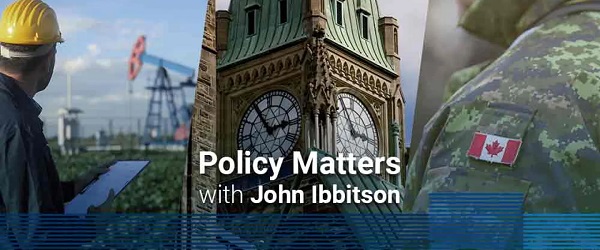
 Business19 hours ago
Business19 hours agoCarney’s new agenda faces old Canadian problems
-

 Daily Caller16 hours ago
Daily Caller16 hours agoBlackouts Coming If America Continues With Biden-Era Green Frenzy, Trump Admin Warns
-
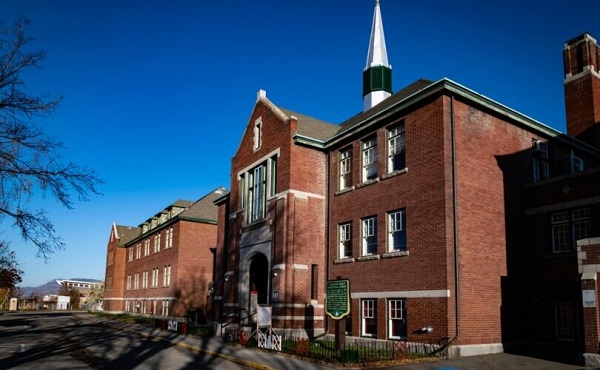
 Indigenous20 hours ago
Indigenous20 hours agoInternal emails show Canadian gov’t doubted ‘mass graves’ narrative but went along with it
-
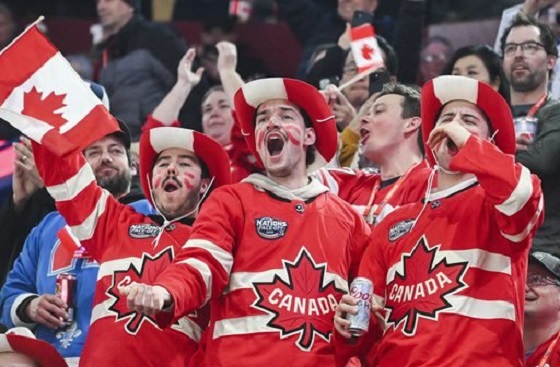
 Bruce Dowbiggin22 hours ago
Bruce Dowbiggin22 hours agoEau Canada! Join Us In An Inclusive New National Anthem
-
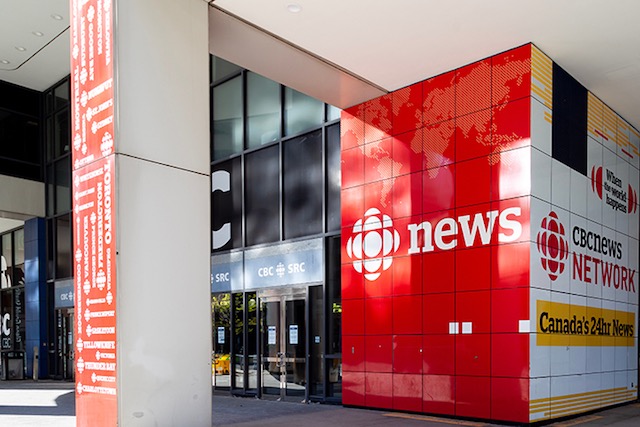
 Business2 days ago
Business2 days agoCBC six-figure salaries soar
-
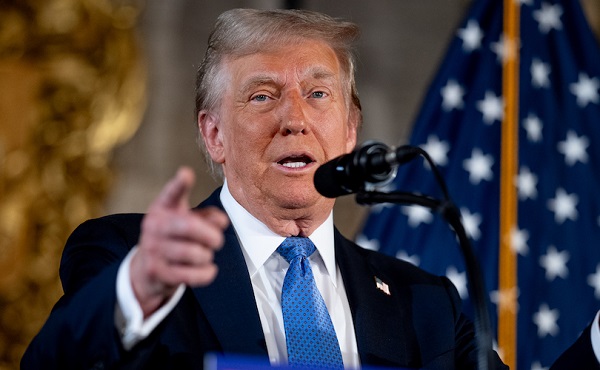
 Business2 days ago
Business2 days agoTrump slaps Brazil with tariffs over social media censorship
-

 Addictions2 days ago
Addictions2 days agoCan addiction be predicted—and prevented?







